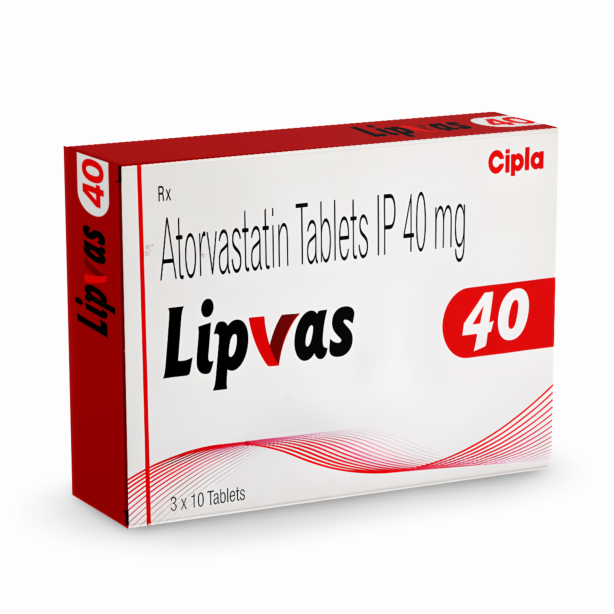Atherosclerotic Cardiovascular Disease, or ASCVD, is one of the leading reasons of death globally, affecting millions of people each year. This condition evolves when plaque builds up inside arteries, limiting blood flow to essential organs like the heart and brain. The disease progresses silently for years before symptoms appear, making early detection and prevention crucial.
Understanding this condition empowers you to make informed decisions about your health. Modern medicine offers effective treatments and prevention strategies that significantly reduce your risk.
Whether you are concerned about your health or a loved one’s well-being, learning about ASCVD can help you take proactive steps toward better cardiovascular health. This comprehensive article covers everything you need to know about this serious but manageable condition, so read on.
What is Atherosclerotic Cardiovascular Disease?
Atherosclerotic Cardiovascular Disease is a type of Cardiovascular Disease that occurs when fatty deposits called plaque accumulate inside arteries throughout your body. These plaques comprise cholesterol, fatty substances, cellular waste products, calcium, and fibrin (a clotting material). Over time, this buildup narrows and hardens arteries, reducing blood flow to organs and tissues.
The process begins early in life but typically doesn’t cause symptoms until middle age or later. ASCVD can affect any artery in your body, leading to various complications depending on which vessels are involved. When it affects the coronary arteries supplying the heart, it causes Coronary Artery Disease (CAD). When it involves arteries supplying the brain, it can lead to a stroke.
This progressive disease affects both men and women, though men typically develop symptoms earlier.
Save up to 90% on your medicine bills

Eliquis 2.5 Mg

Crestor 40 Mg

Lipvas 40 mg

Arkamin 100 Mcg
Signs and symptoms
Early stages of Atherosclerotic Cardiovascular Disease often produce no symptoms, which is why it’s sometimes called a silent killer. Symptoms typically appear when arteries become significantly narrowed or blocked. Common signs include:
- Chest pain (Angina)
- Shortness of breath
- Fatigue and weakness
- Heart palpitations
- Leg pain during walking (claudication)
- Sudden weakness or numbness
These ASCVD symptoms can vary significantly between individuals and may be mistaken for other conditions, highlighting the importance of regular medical checkups.
Types of Atherosclerotic Cardiovascular Disease
Healthcare professionals recognize seven primary forms of ASCVD based on affected vessel locations:
- Coronary Artery Disease (CAD): Affects arteries supplying the heart muscle, potentially causing chest pain, heart attacks, or heart failure.
- Cerebrovascular Disease (CD): It involves arteries supplying the brain, leading to strokes or transient ischemic attacks (mini-strokes).
- Peripheral Arterial Disease (CAD): Claudication or leg pain during walking affects arteries in the arms, legs, pelvis, or kidneys, leading to pain, numbness, or organ dysfunction.
- Aortic Disease (AD): It affects arteries supplying the heart muscle and the aorta, potentially leading to conditions like chest pain, heart attacks, and heart failure.
- Renal Artery Disease (RAD): Affects kidney blood supply, potentially leading to Hypertension or kidney failure.
- Mesenteric Artery Disease (MAD): Involves arteries supplying the intestines, causing abdominal pain after eating.
- Carotid Artery Disease (CAD): Affects neck arteries supplying the brain, significantly increasing stroke risk.
Each form requires specific diagnostic approaches and treatment strategies, though they often coexist in the same patient.
Risk factors and causes of ASCVD
Multiple factors contribute to developing Atherosclerotic Cardiovascular Disease. Understanding these helps identify your personal risk level:
- Age and gender: Risk increases with age, particularly after 45 for men and 55 for women. The hormonal changes after Menopause increase women’s risk significantly.
- High cholesterol: Elevated low-density lipoproteins cause ASCVD by depositing in artery walls, and maintaining LDL cholesterol below 100 mg/dL for most people.
- Hypertension or High Blood Pressure: Hypertensive Atherosclerotic Cardiovascular Disease develops when elevated blood pressure damages artery walls, making them more liable to plaque buildup. The force of blood against vessel walls creates tiny tears that attract fatty deposits.
- Diabetes: People with Diabetes have a 2-4 times higher risk of Cardiovascular Disease.
- Smoking: Tobacco use impairs vessel walls and reduces oxygen in blood, promoting plaque formation, causing ASCVD. Even secondhand smoke exposure increases risk.
- Family history: ASCVD in close relatives significantly increases your risk, suggesting a genetic predisposition.
- Lifestyle factors: Poor diet, physical inactivity, obesity, and chronic stress contribute to disease development by affecting cholesterol levels, blood pressure, and inflammation.
- Gut microbiome: Certain intestinal bacteria may influence cardiovascular health. The gut microbiome in Atherosclerotic Cardiovascular Disease plays a role in this interaction, and maintaining healthy gut bacteria through diverse, fiber-rich diets may help reduce cardiovascular risk.

Diagnosis and risk assessment
Early detection of ASCVD is crucial for timely and effective intervention. Diagnosis typically involves:
- Clinical evaluation includes a physical examination for signs like weak pulses or abnormal heart sounds and a medical and family history review to assess symptoms and inherited risk.
- Stress testing: Exercise or medication-induced stress tests reveal how well your heart functions under increased demand, helping identify blocked arteries.
- Ankle-brachial index: This simple test compares blood pressure in arms and legs to detect peripheral artery disease.
- Laboratory tests: A lipid panel checks cholesterol levels, blood glucose tests for Diabetes or prediabetes, and C-reactive protein levels indicate inflammation.
- Imaging & functional tests: ECG and echocardiography assess heart rhythm and function. Stress testing evaluates cardiac performance under exertion, while coronary angiography, carotid ultrasound, and CT angiography visualize blood flow and vessel structure.
- Risk estimation tools: The Atherosclerotic Cardiovascular Disease risk calculator helps estimate a patient’s 10-year heart disease or stroke risk.
Treatment and management strategies
Managing ASCVD typically involves medications, surgical procedures, and long-term lifestyle adjustments.
- Medications: Statins help lower LDL cholesterol and stabilize arterial plaques. Antihypertensives manage High Blood Pressure, while antiplatelet agents reduce the risk of clot formation. In individuals with Diabetes, blood sugar control is essential and often requires targeted medications.
- Surgical interventions: It may be necessary for advanced cases. Procedures like angioplasty and stenting can reopen narrowed arteries, while Coronary Artery Bypass Grafting (CABG) reroutes blood around blockages to restore proper flow.
- Therapeutic Lifestyle Interventions (TLI): TLI, diet, and exercise are essential to ASCVD risk reduction in older and younger populations. These include smoking cessation, adopting a heart-healthy diet (fruits, whole grains, vegetables, and lean proteins), engaging in regular physical activity (at least two and a half hours per week), maintaining a healthy weight, and practicing stress reduction techniques such as meditation, all of which play a critical role in long-term cardiovascular management.
Prevention
Prevention remains the most effective approach to Atherosclerotic Cardiovascular Disease:
- Diet: Follow heart-healthy eating patterns like the Mediterranean diet, emphasizing fruits, whole grains, lean proteins, and healthy fats while limiting saturated fats, trans fats, and sodium.
- Physical activity: Regular exercise strengthens the heart, elevates circulation, and helps control weight, blood pressure, and cholesterol levels.
- Weight management: Maintaining a healthy weight decreases strain on the cardiovascular system and helps control other risk factors.
- Smoking cessation: Quitting smoking significantly reduces cardiovascular risk within months and continues improving over time.
- Stress management: Chronic stress contributes to Cardiovascular Disease through various mechanisms. Try stress relief activities like meditation, yoga, and regular relaxation practices.
- Regular medical care: Routine checkups allow early detection and management of risk factors before they cause significant damage.
Conclusion
Atherosclerotic Cardiovascular Disease is not only common, it’s often silent until severe damage occurs. Fortunately, early intervention, appropriate medication, lifestyle changes, and sometimes surgery can significantly reduce risk and improve outcomes.
Understanding your personal risk factors, like high cholesterol, High Blood Pressure, smoking, and Diabetes, is key to prevention. Even your gut health and stress levels play a surprising role in cardiovascular wellness.
With modern diagnostic tools and treatments, ASCVD is a manageable condition when addressed early. Proactive care is essential, whether managing existing symptoms or aiming to prevent them.
If you are at risk or experiencing symptoms, consult a healthcare professional to evaluate your cardiovascular health and personalize your treatment plan.

Frequently Asked Questions
Is Hypertension an Atherosclerotic Cardiovascular Disease?
No, Hypertension is not an ASCVD but rather a significant risk factor that accelerates plaque formation in arteries. High blood pressure damages vessel walls, making them more susceptible to cholesterol deposits and significantly increasing cardiovascular risk.
What are the potential complications of Atherosclerotic Cardiovascular Disease?
Major complications include heart attacks, strokes, heart failure, kidney disease, peripheral artery disease, and aneurysms. These occur when blocked arteries prevent adequate blood flow to vital organs, potentially causing permanent damage or death without prompt treatment.
Can ASCVD be reversed or cured completely?
While ASCVD cannot be wholly cured, early detection and aggressive lifestyle changes, such as diet, exercise, and quitting smoking, can slow, halt, or even slightly reverse plaque buildup. Medications and medical procedures further help manage the disease and reduce the possibility of complications.
Can infections increase the risk of developing ASCVD?
Yes, chronic infections and inflammatory conditions, like Periodontal Disease or viral infections, can contribute to systemic inflammation. This inflammation may accelerate plaque formation and increase ASCVD risk, particularly in individuals predisposed to heart or vascular conditions.
How does Menopause affect Atherosclerotic Cardiovascular Disease risk?
After Menopause, women encounter a drop in Estrogen levels, which may negatively affect blood vessel health. This hormonal shift increases LDL (bad cholesterol) and decreases HDL (good cholesterol), raising the risk of plaque buildup and ASCVD progression in postmenopausal women.
When referencing outside resources, GoodrxMedicine always provides full citations. To learn more about the measures we use to maintain the quality of our content, please review our Content Information Policy.











